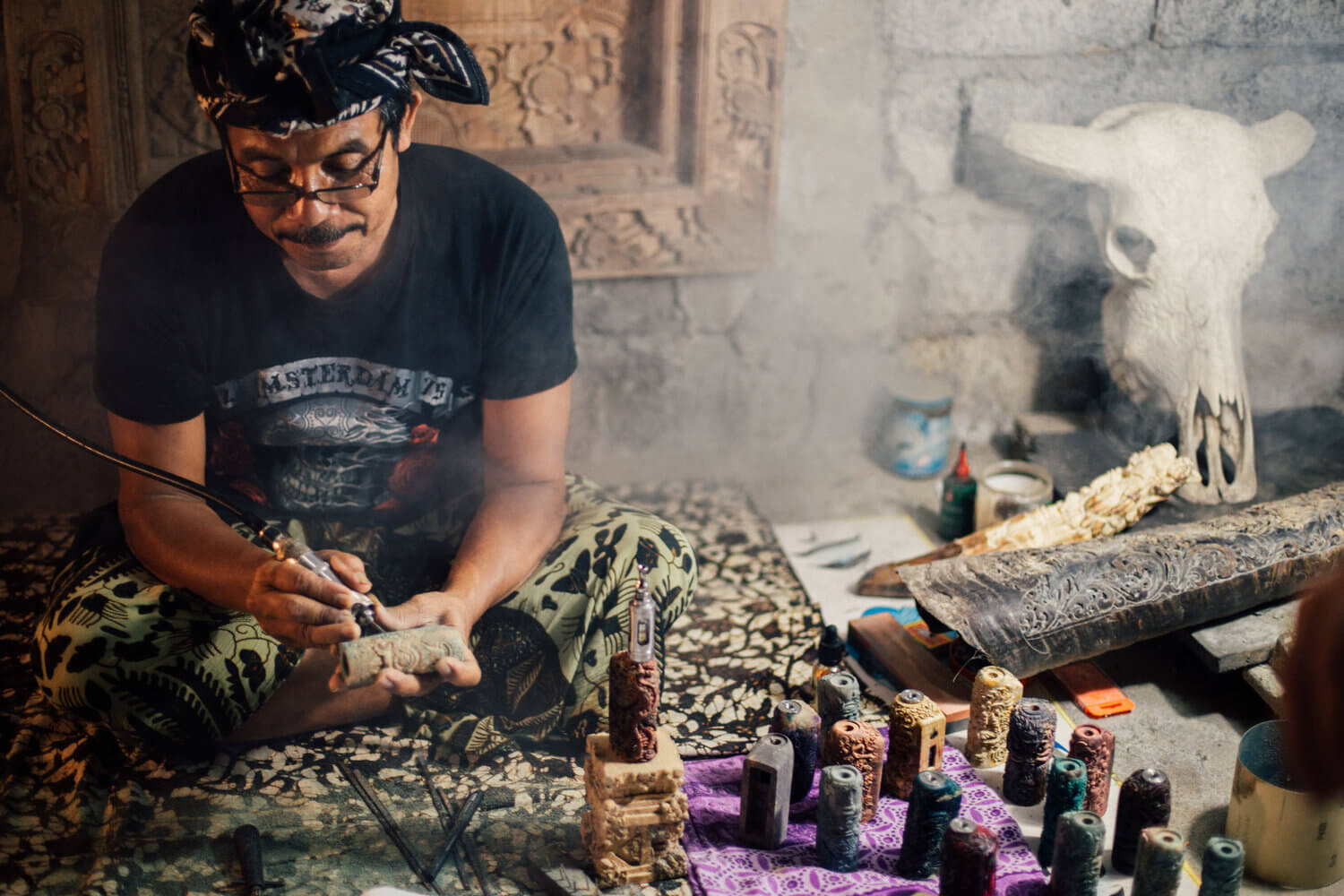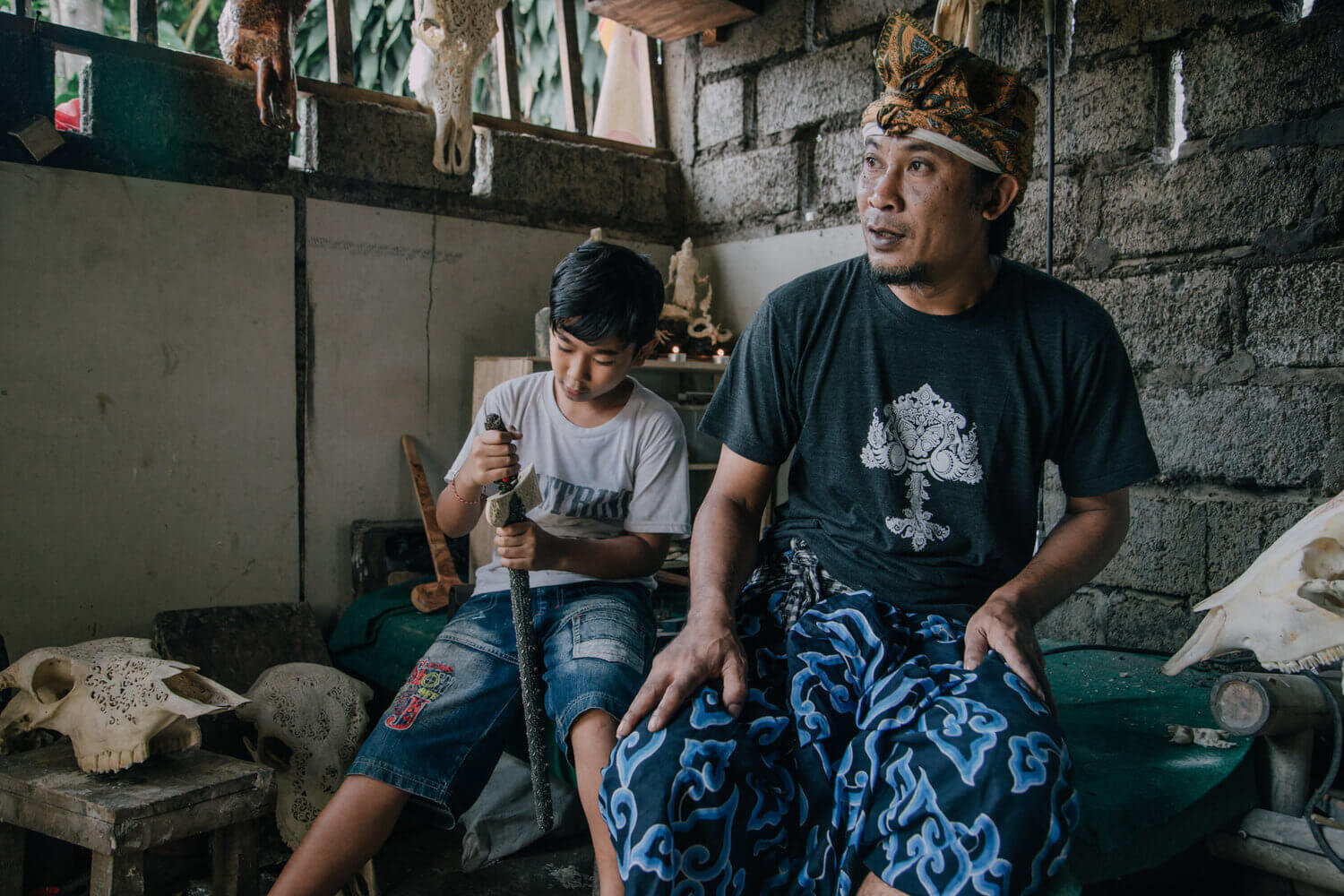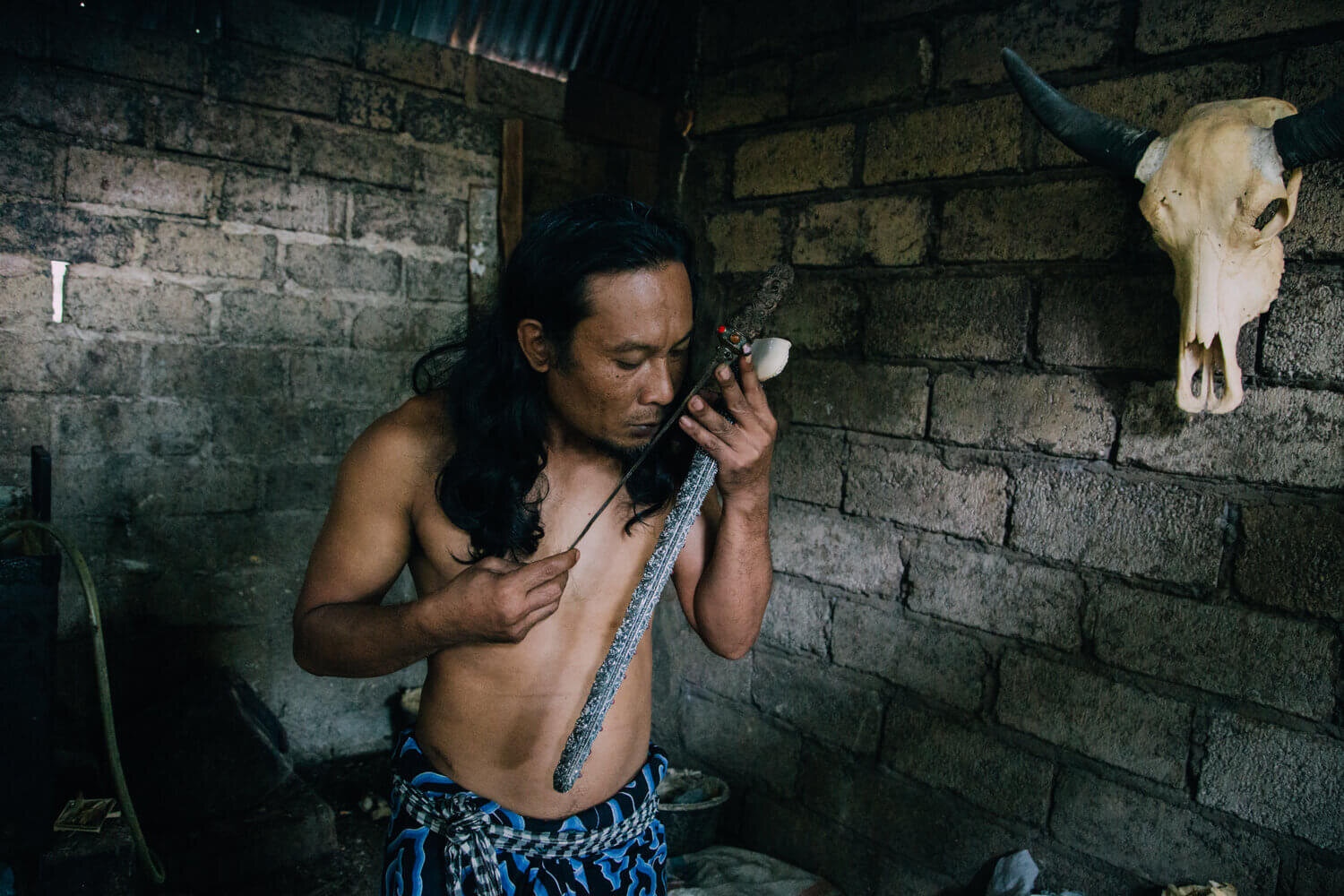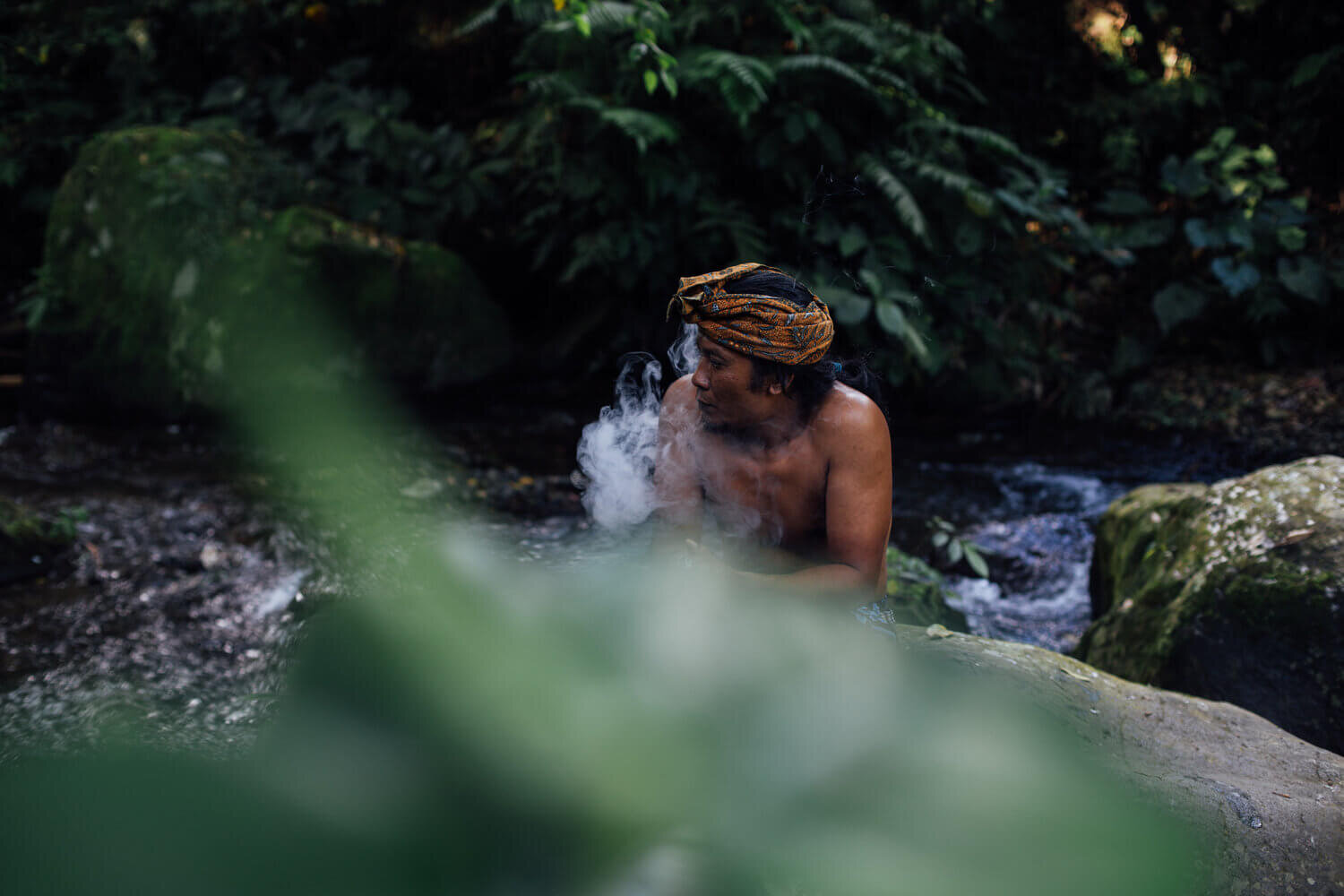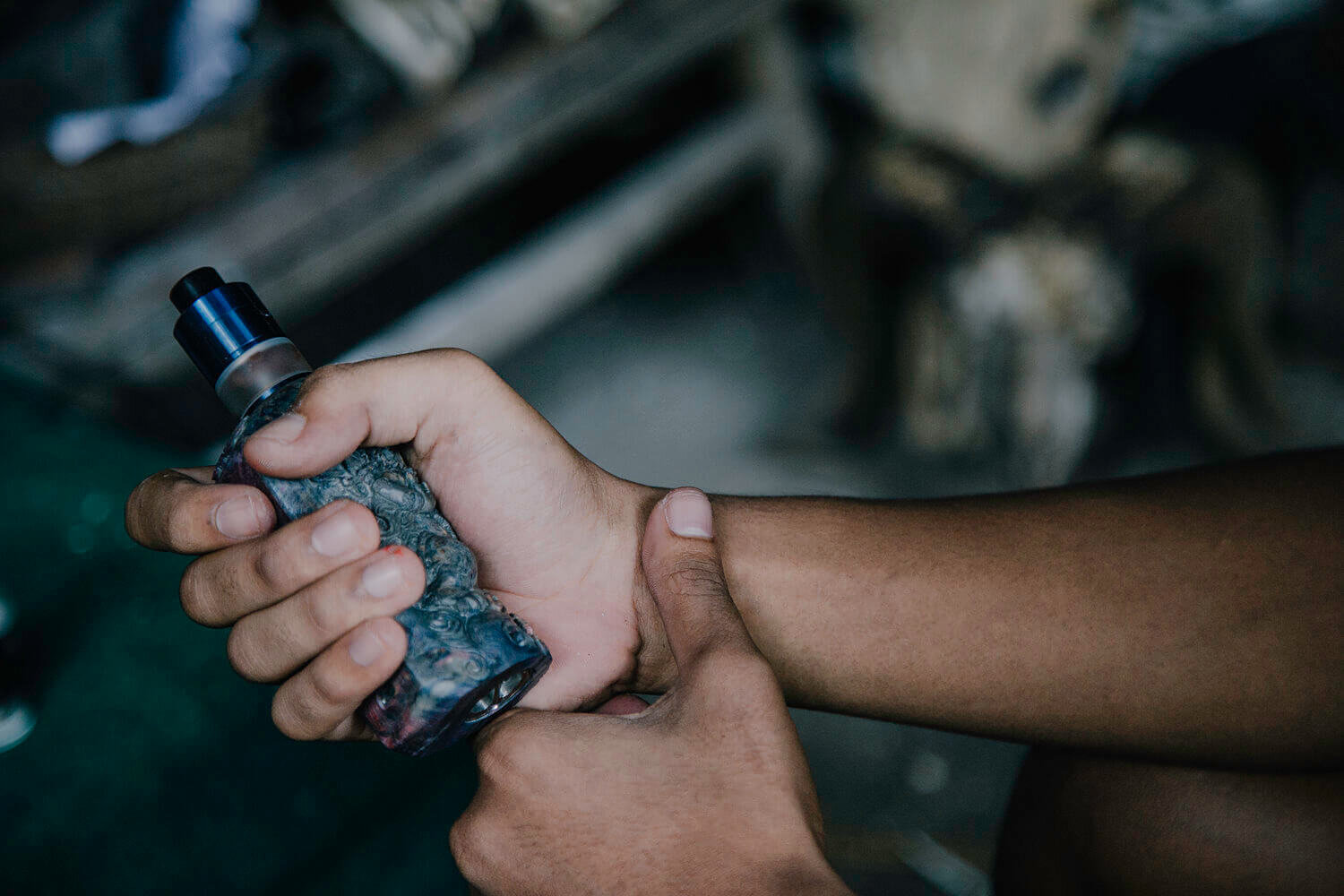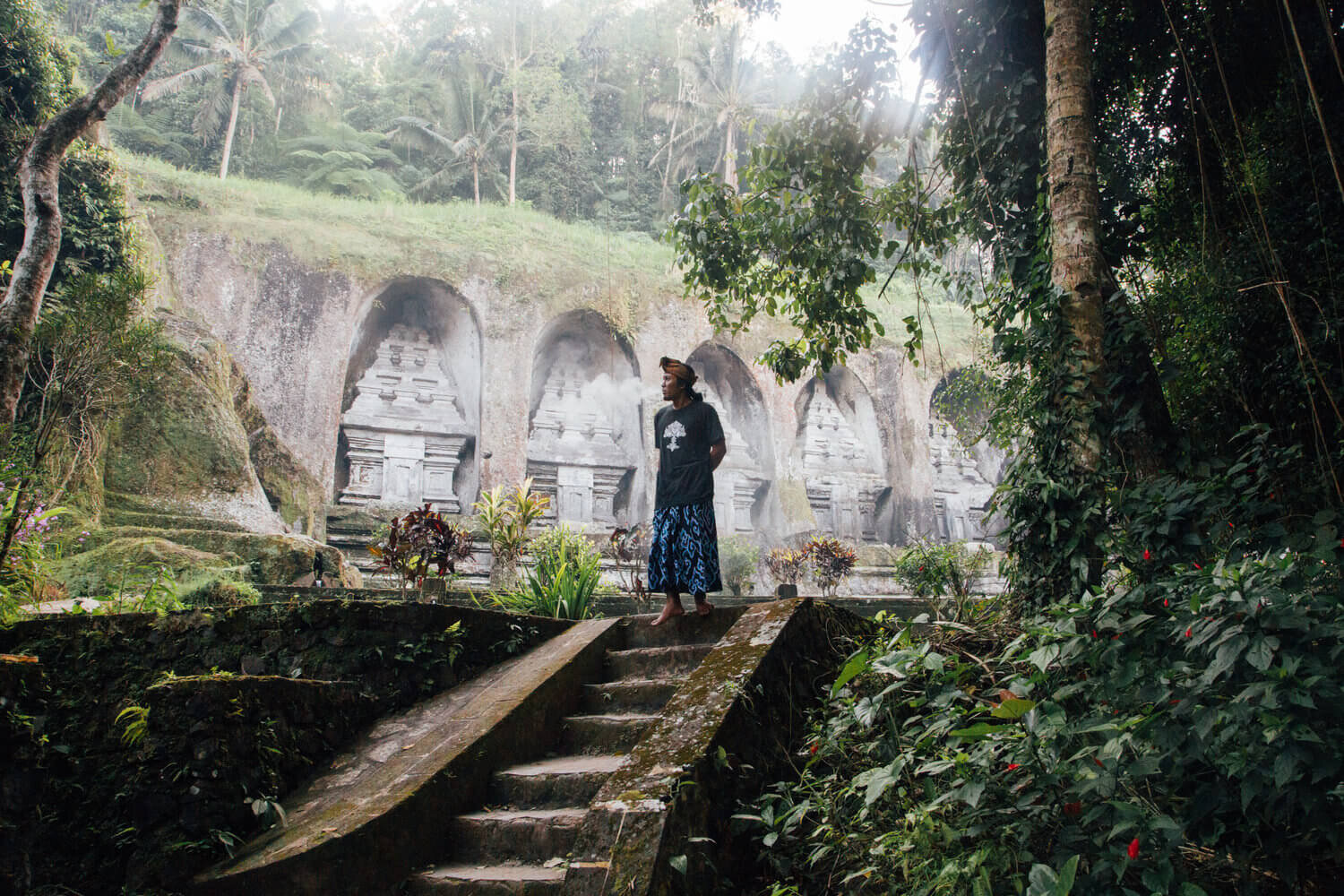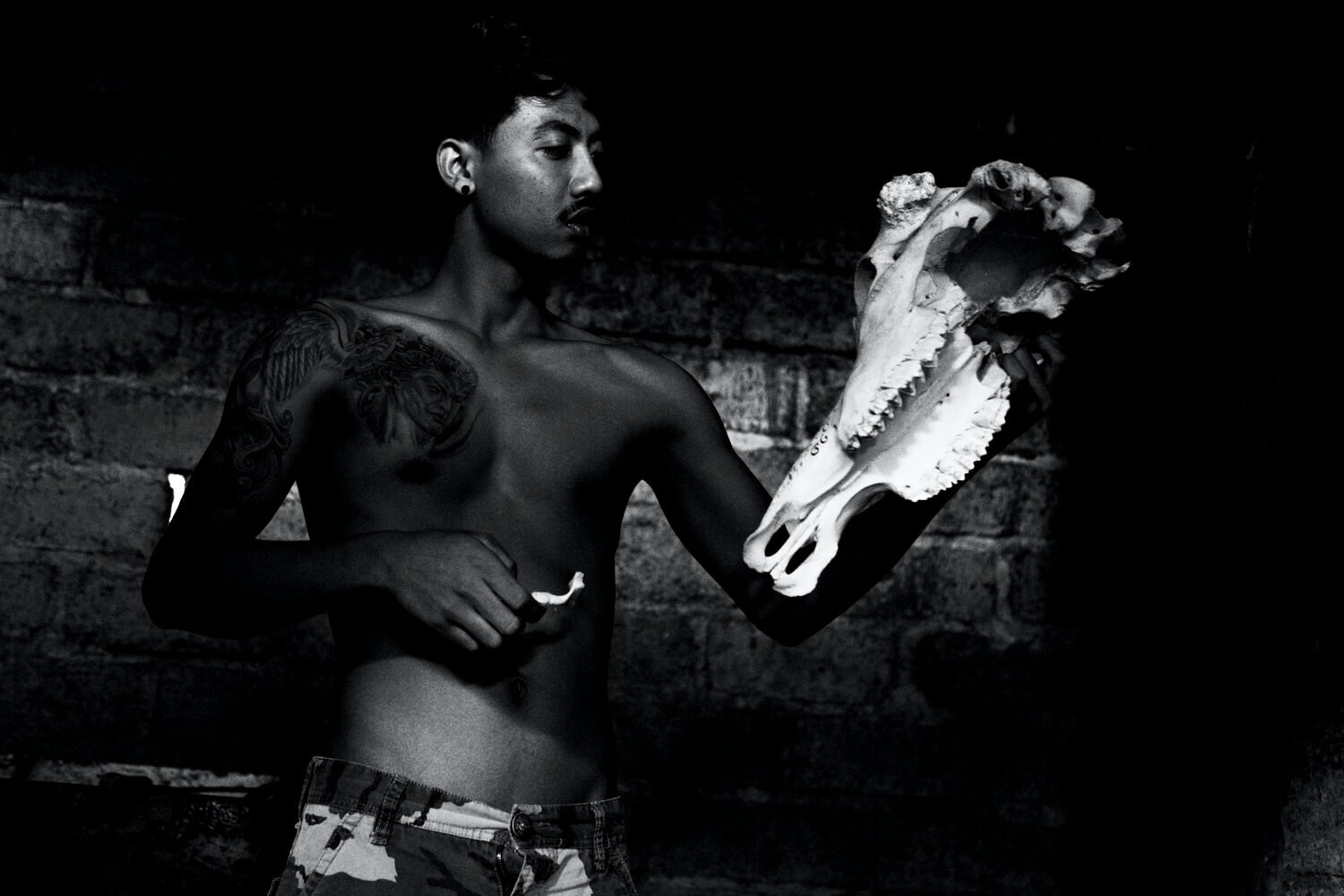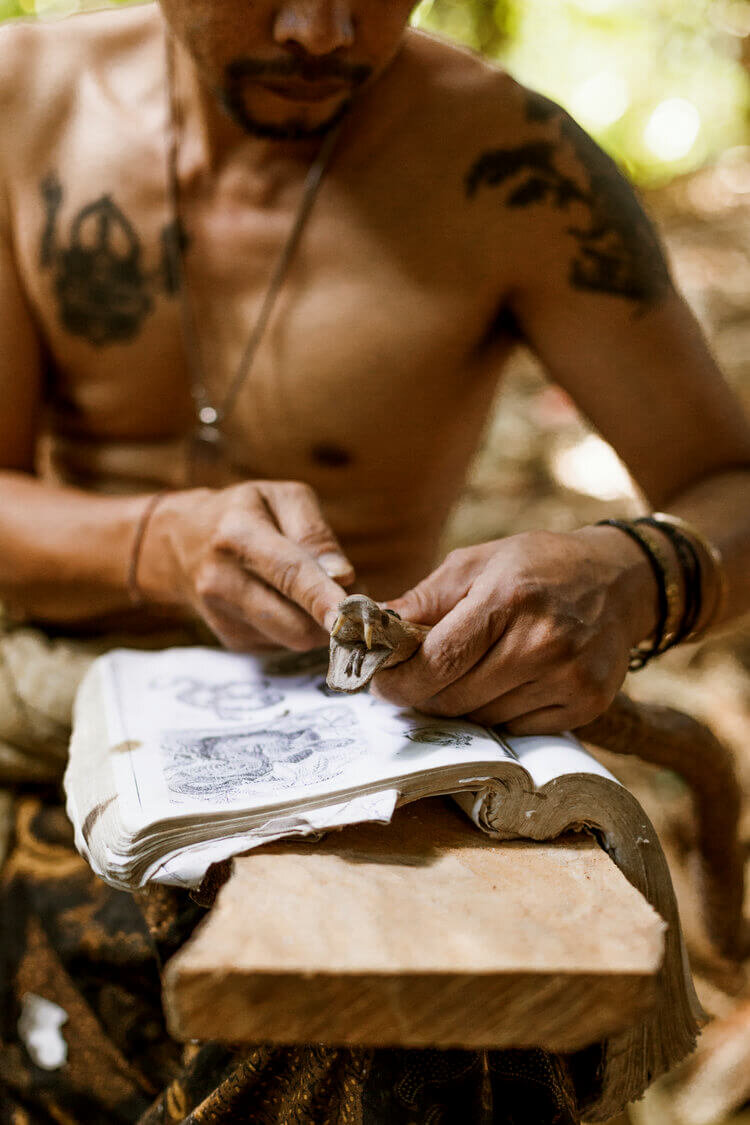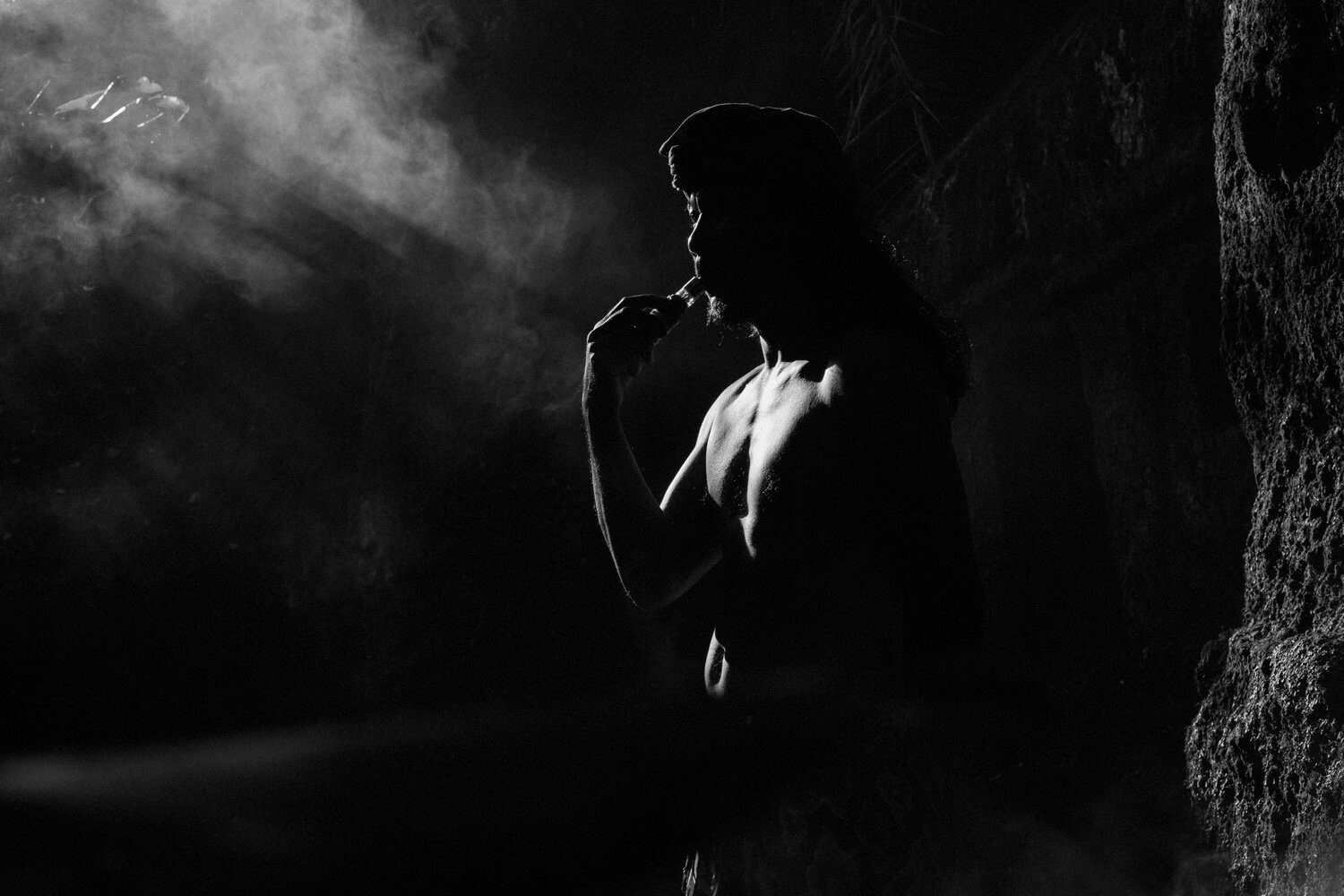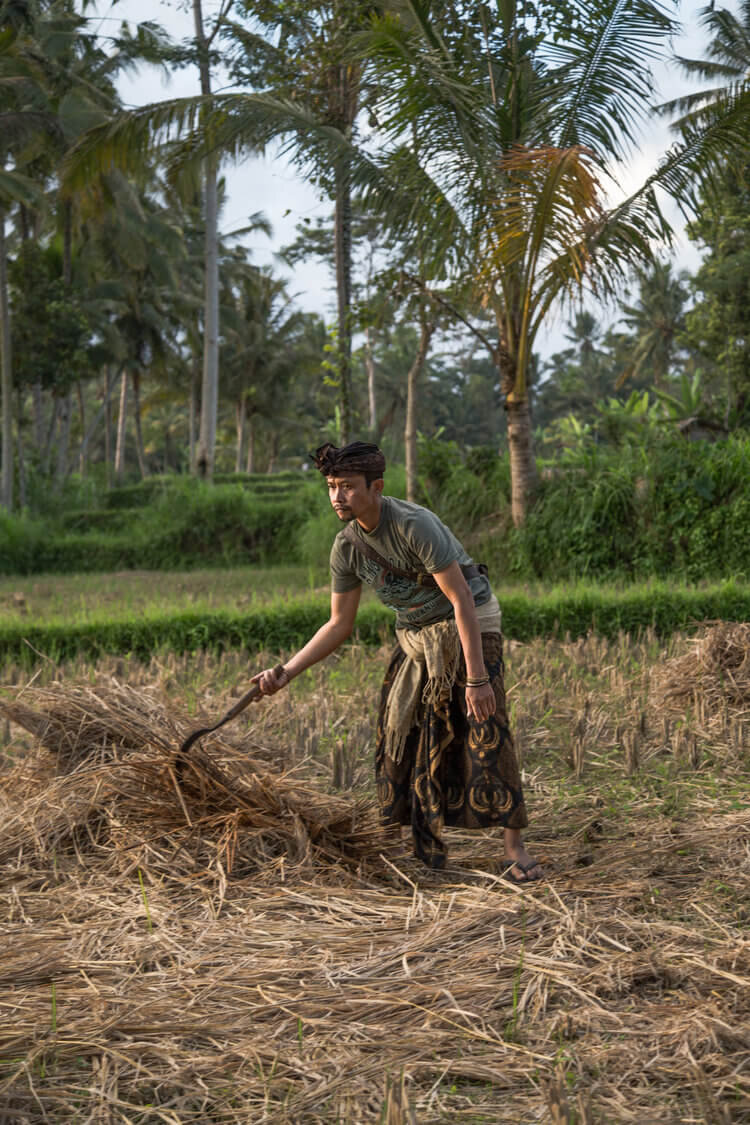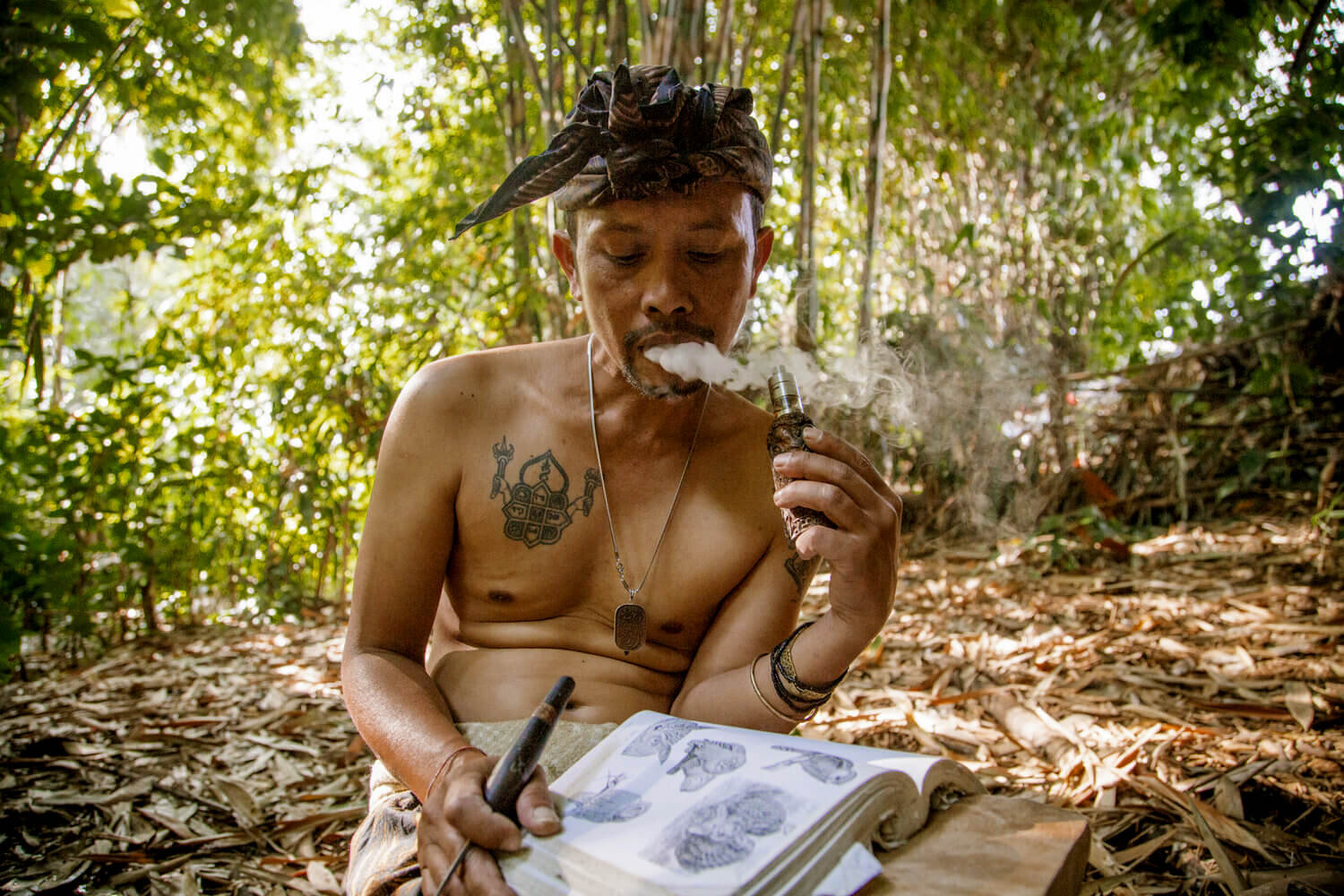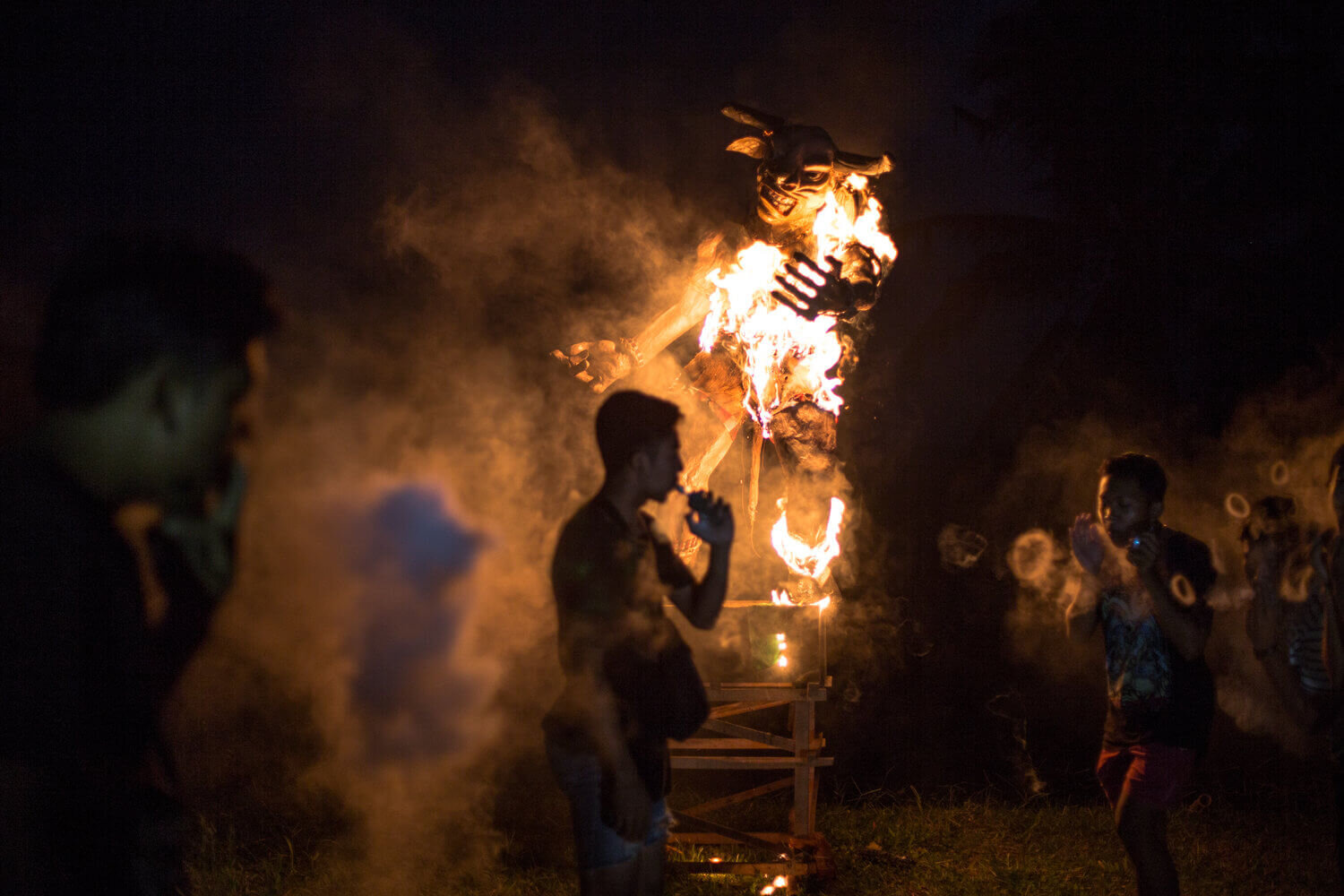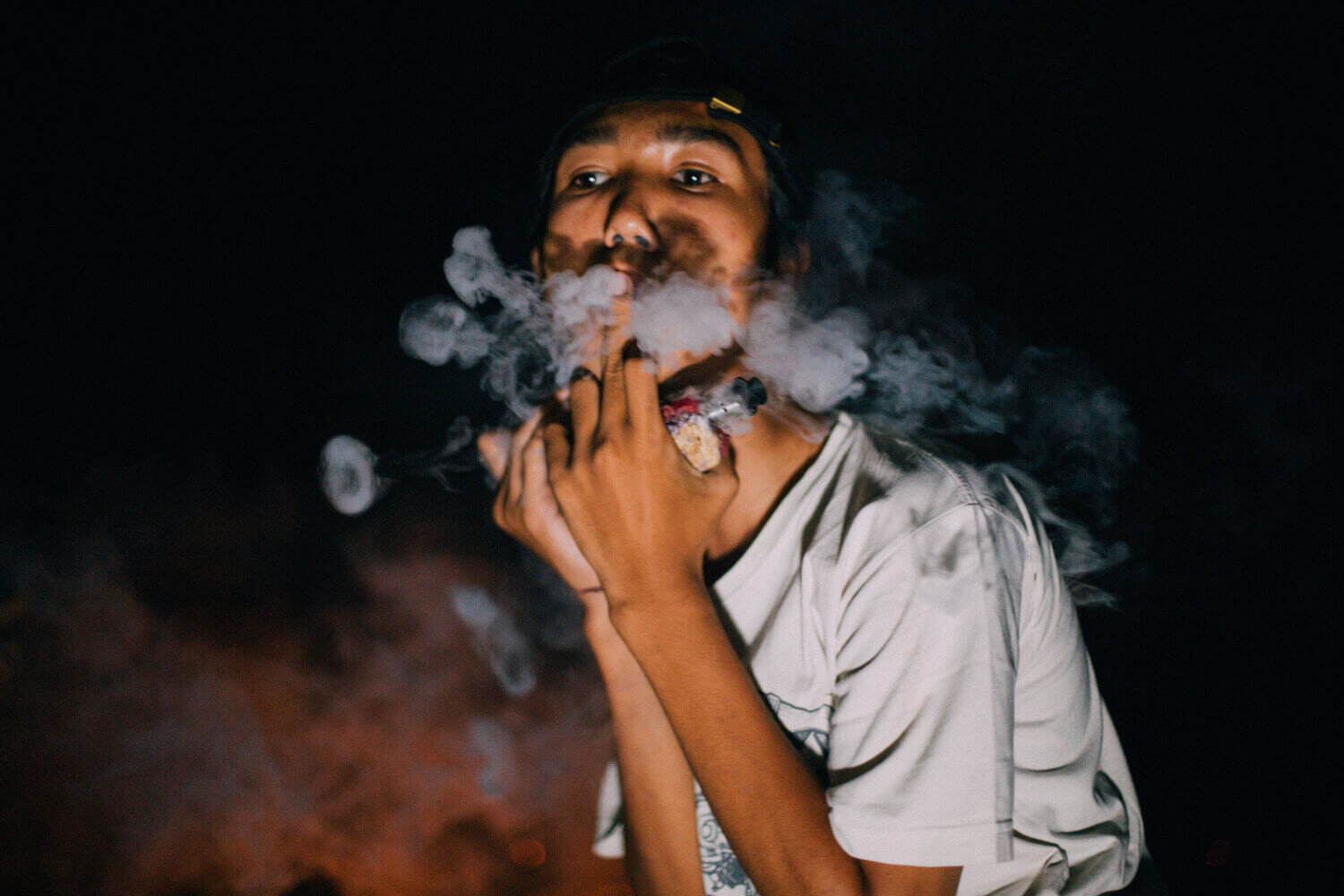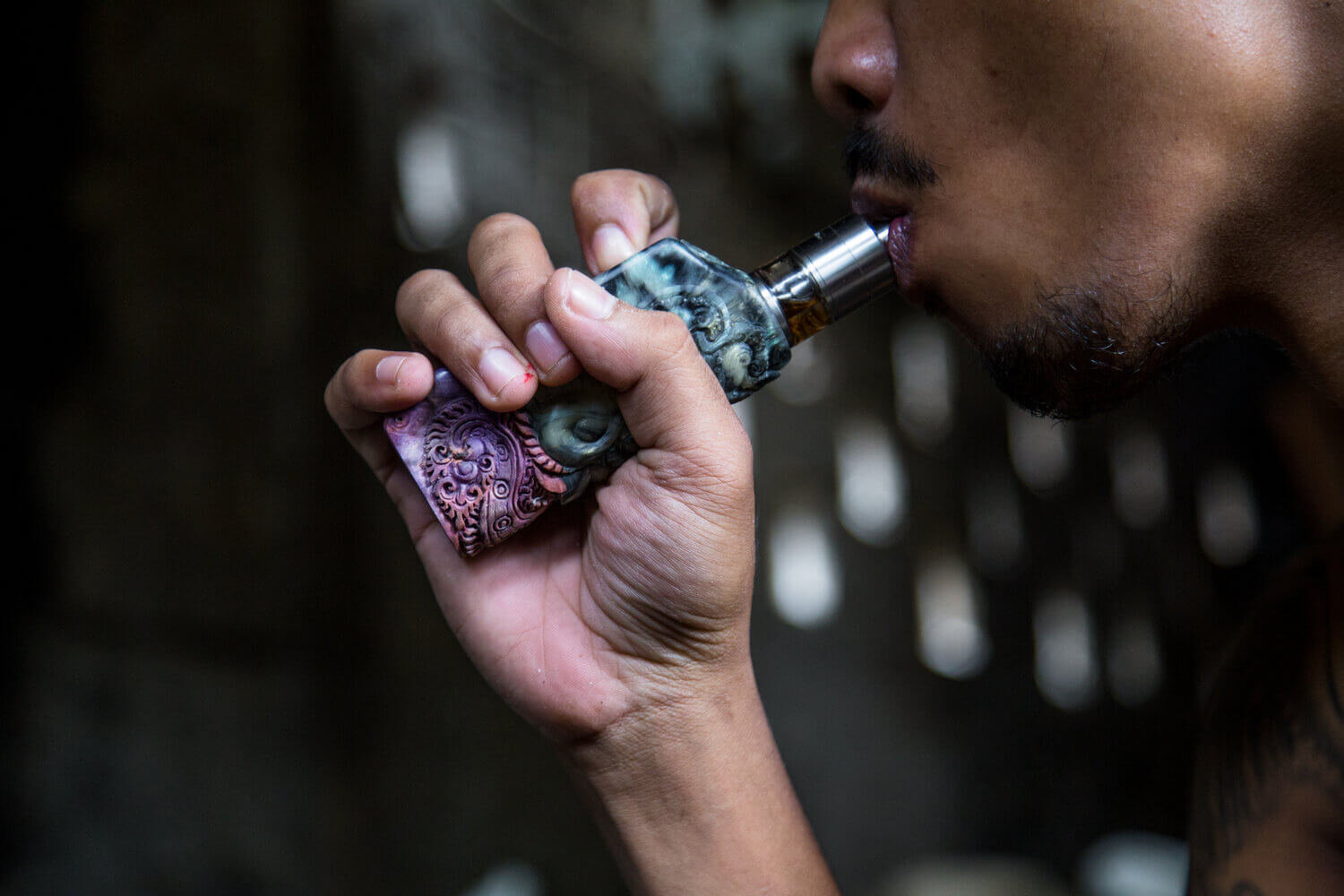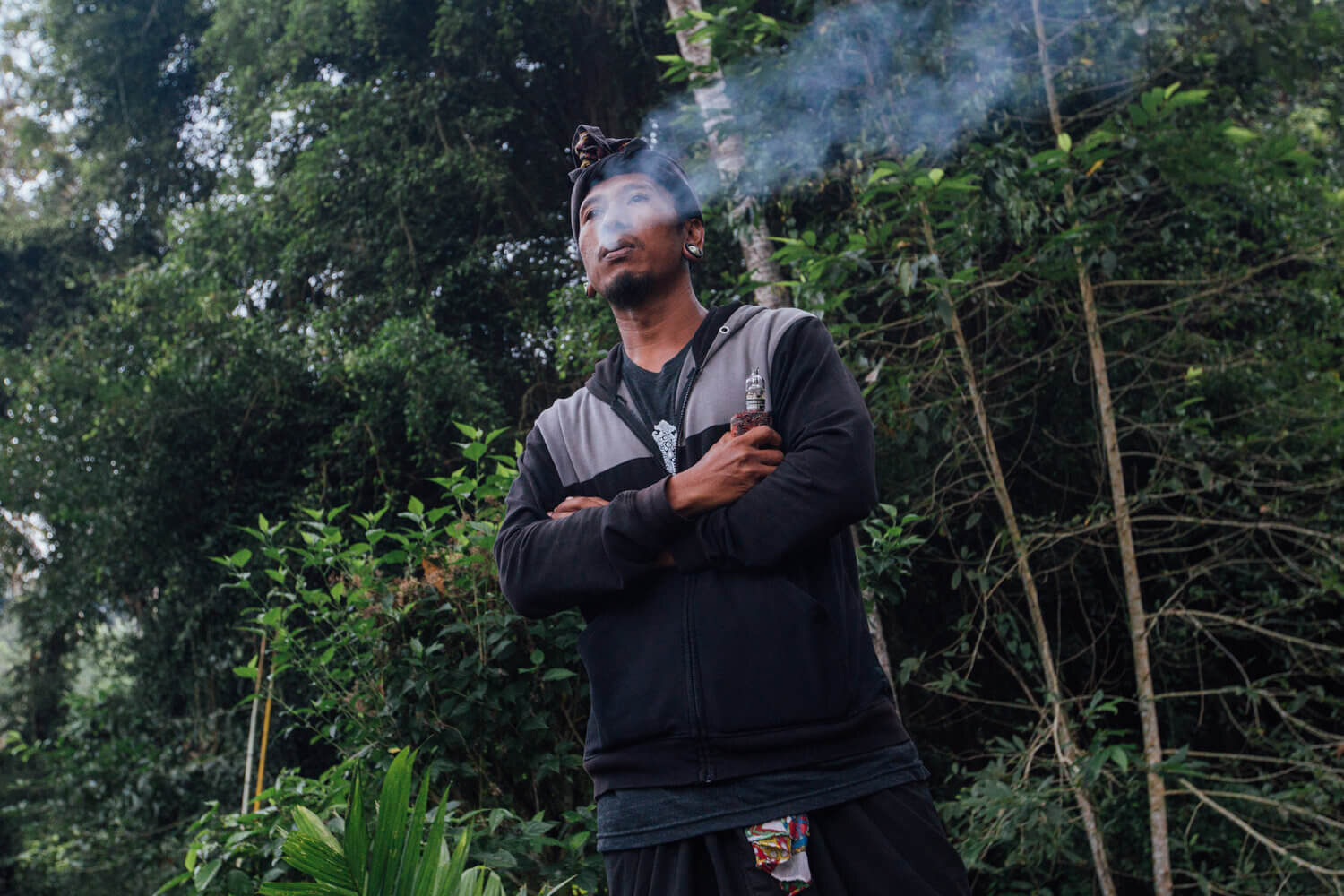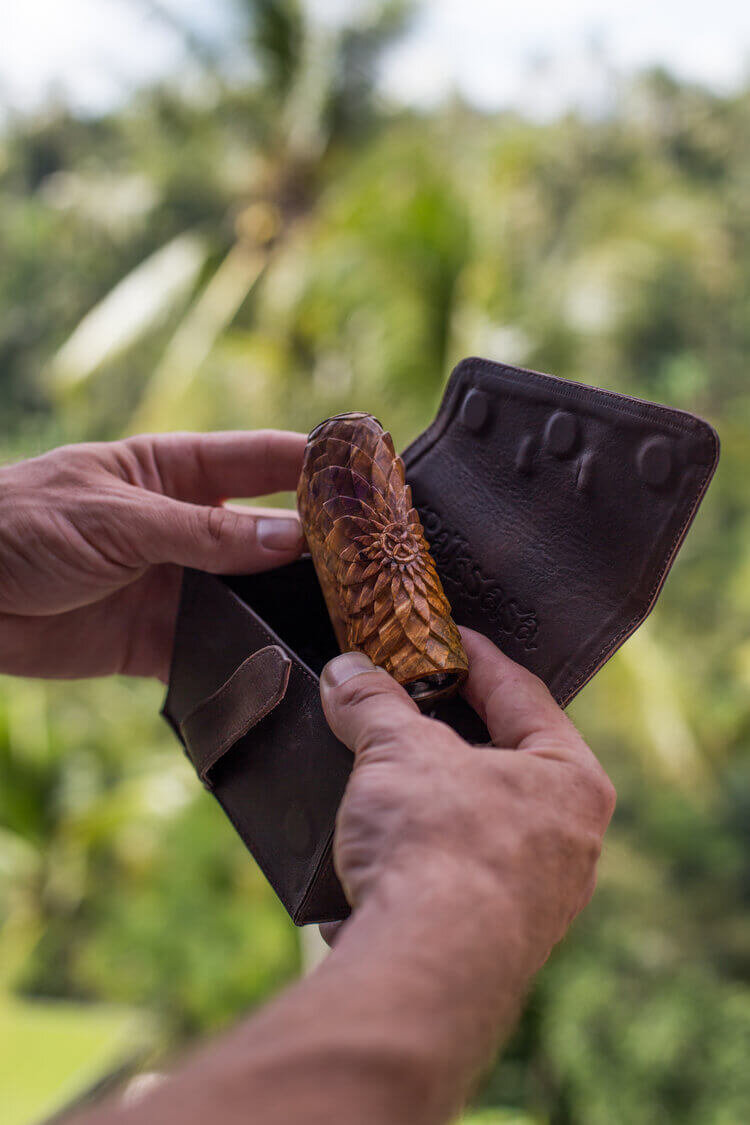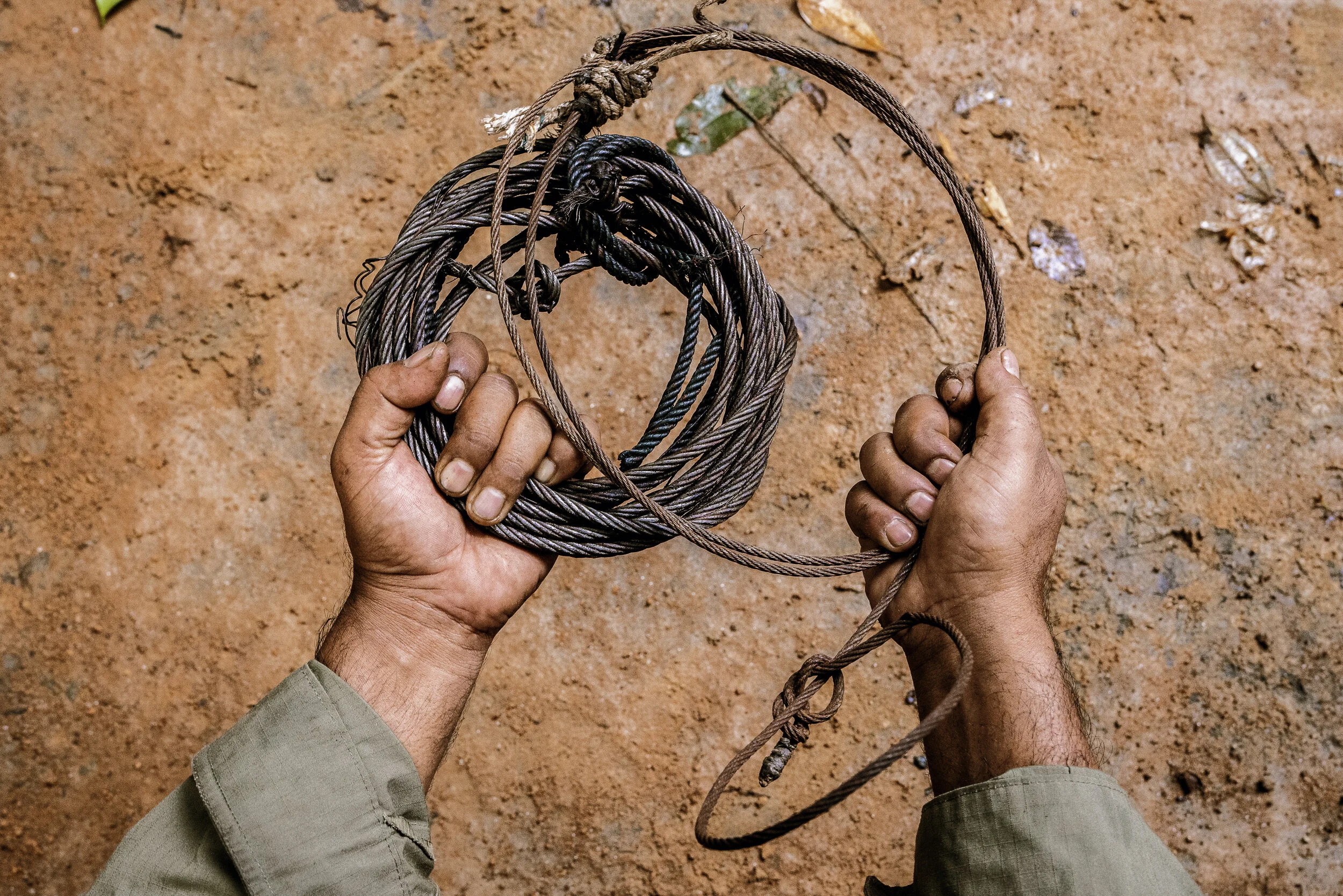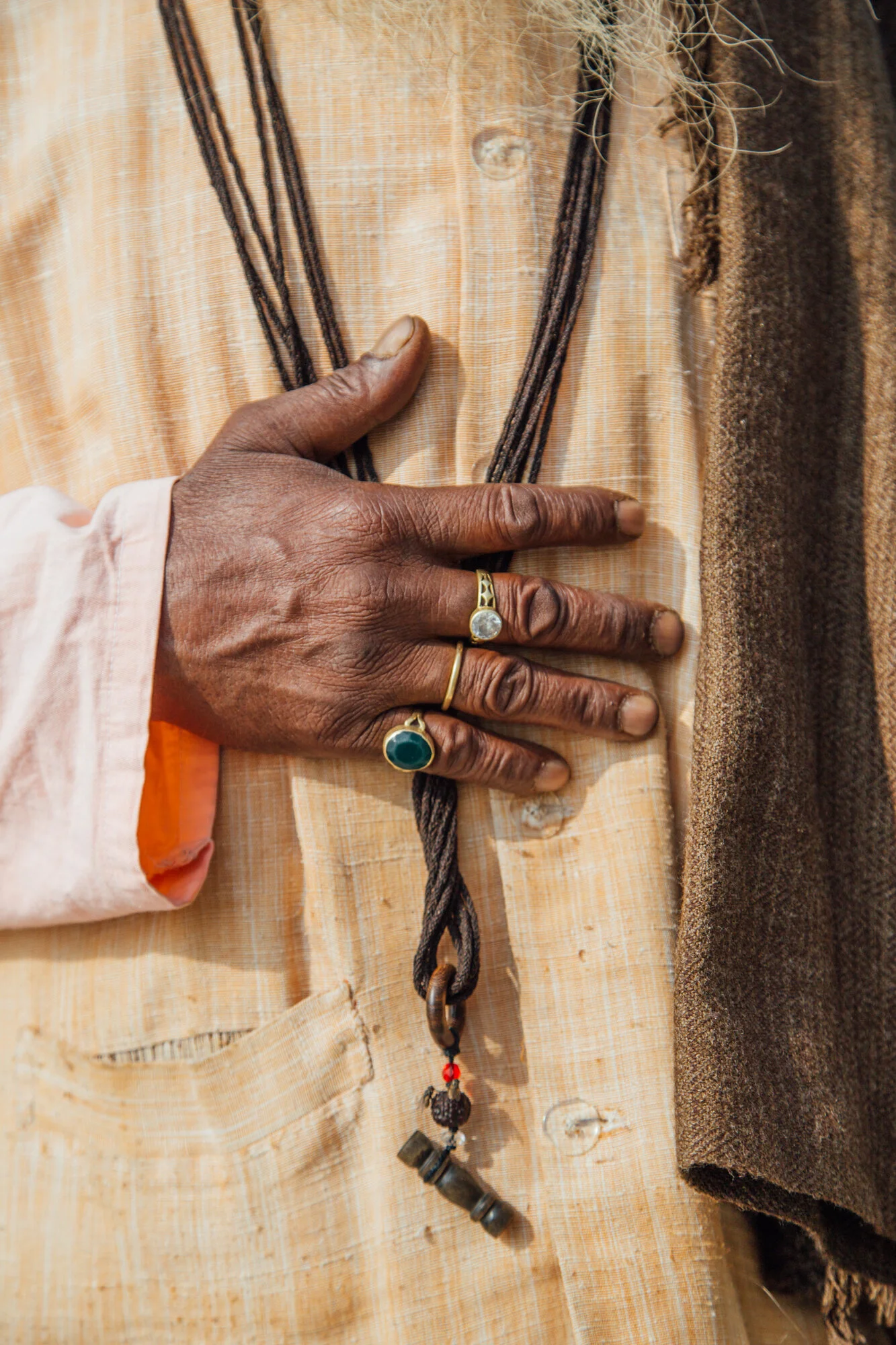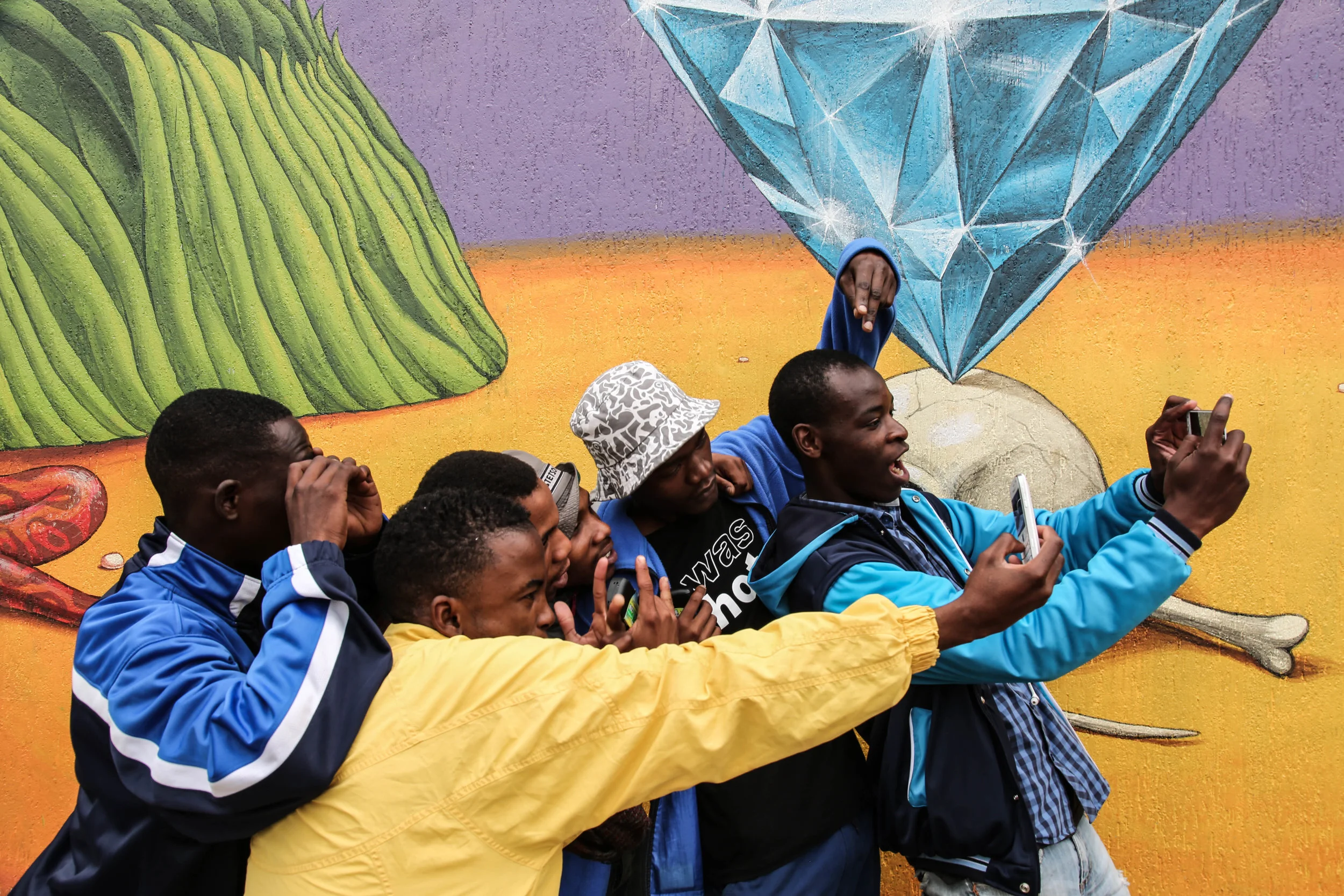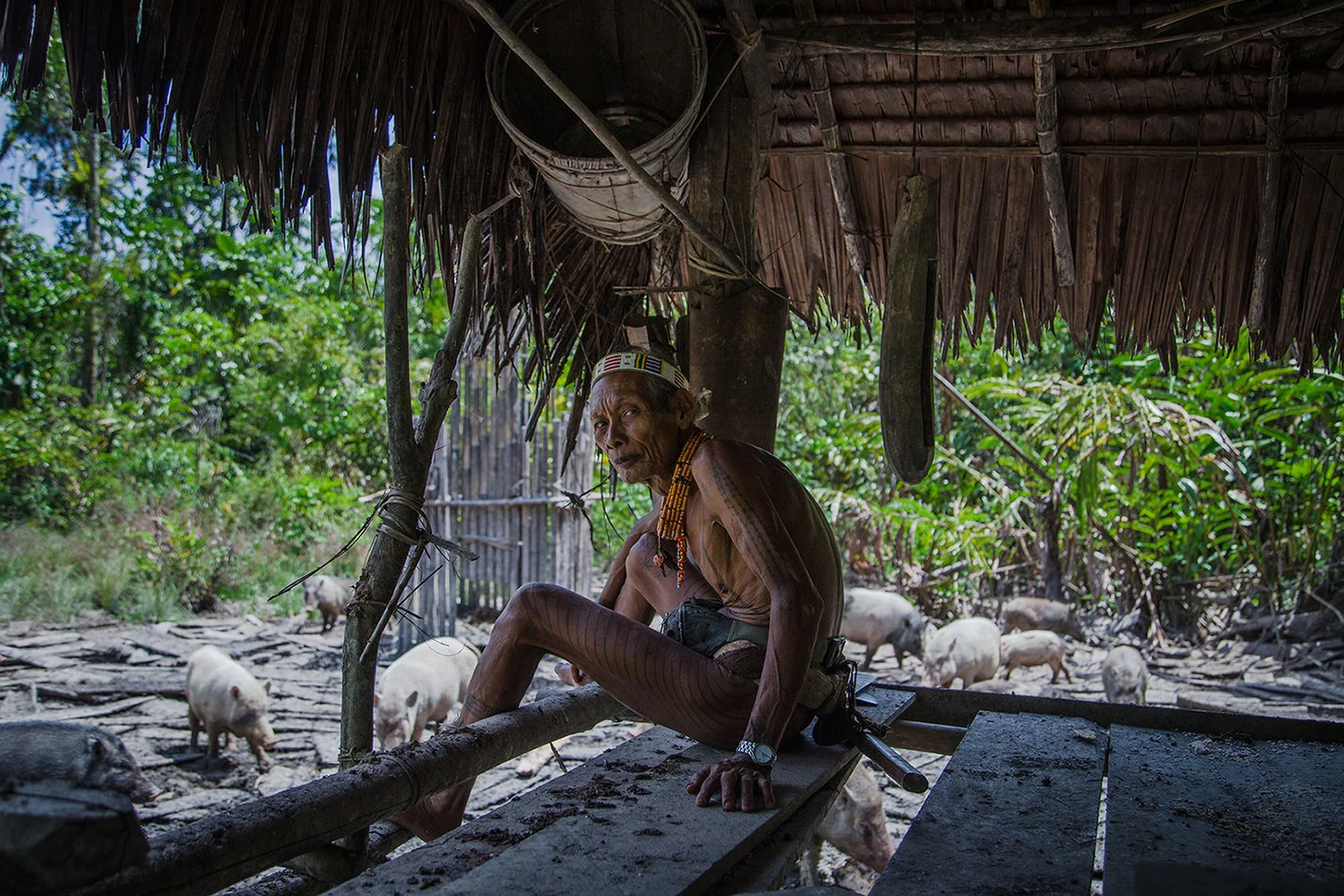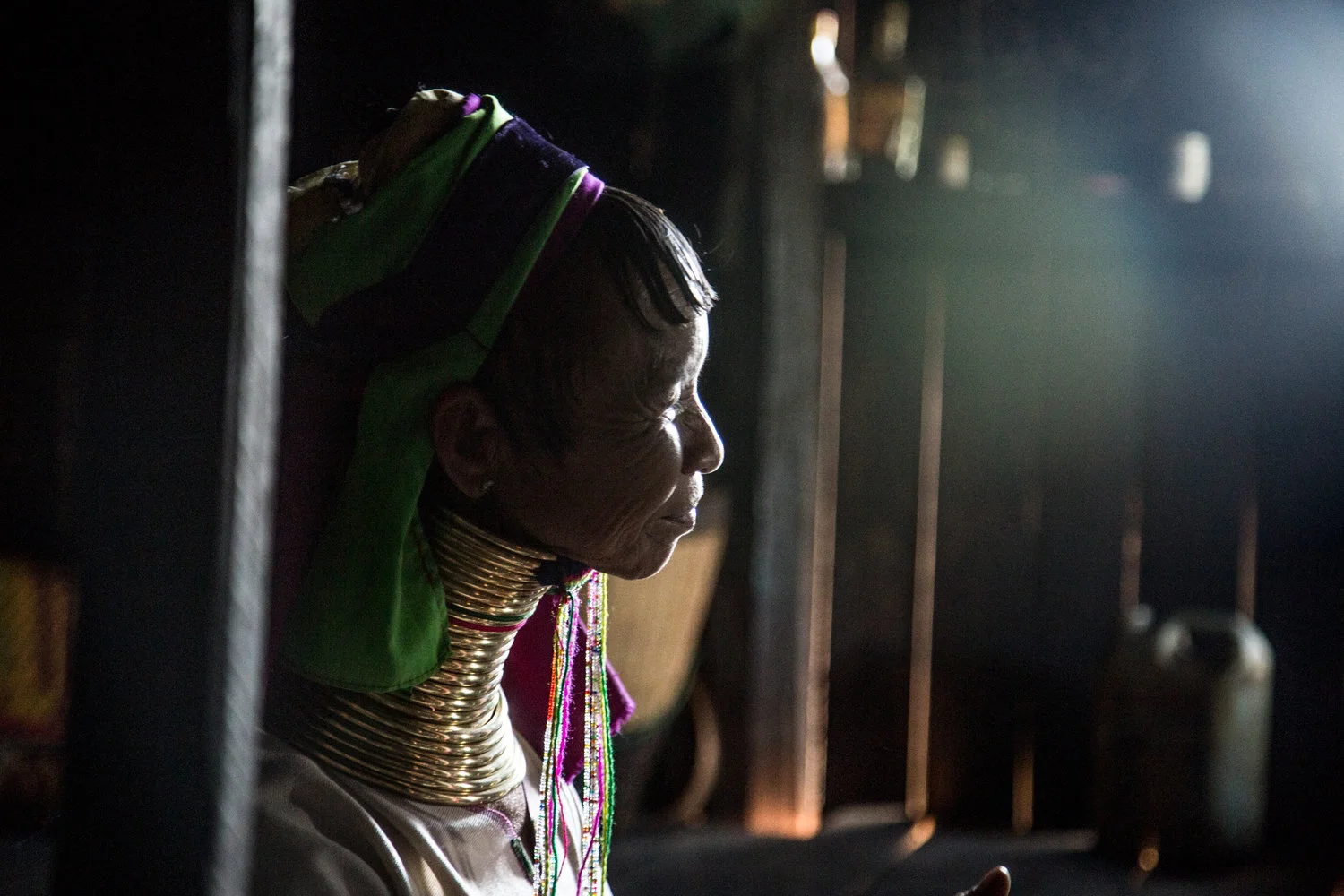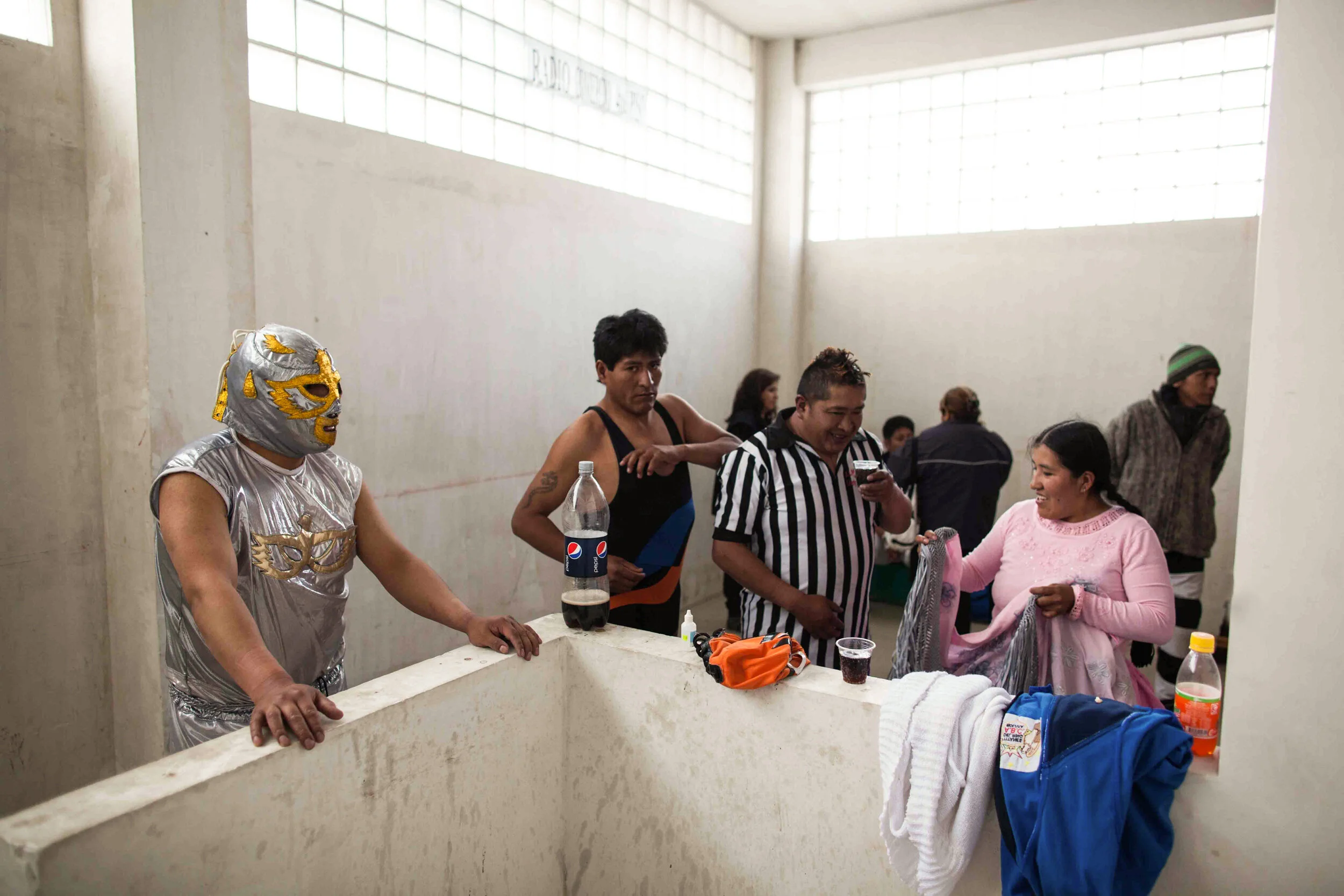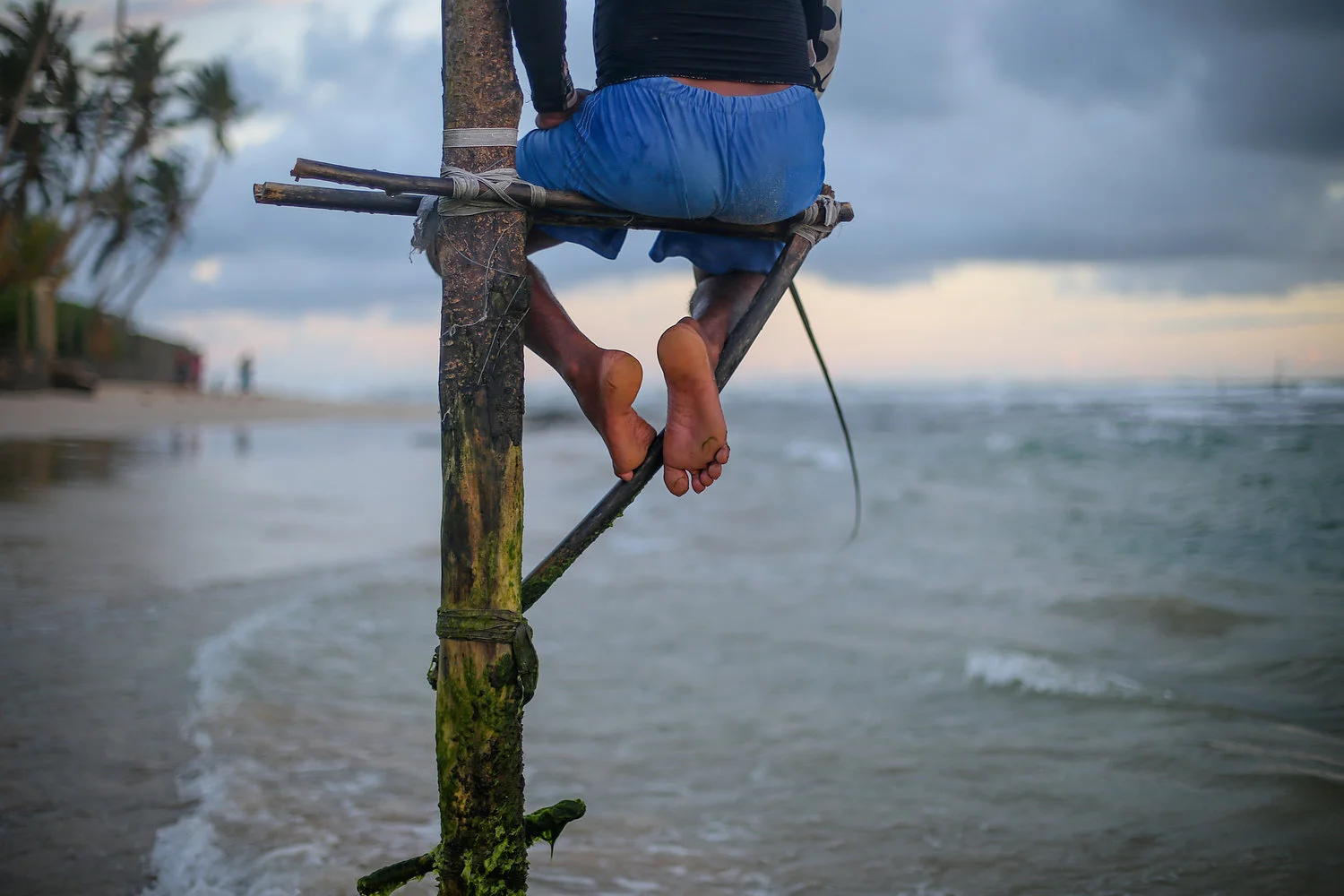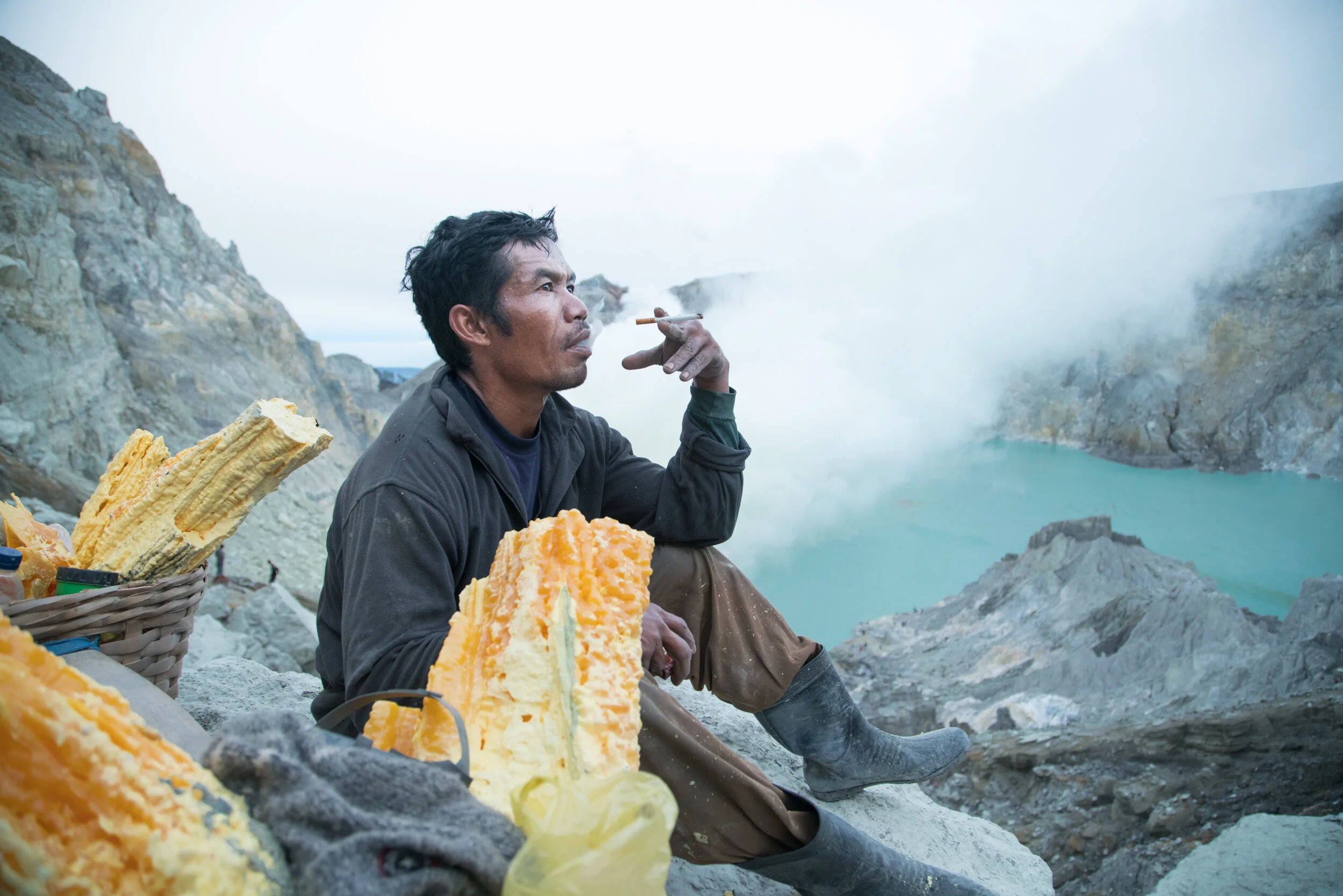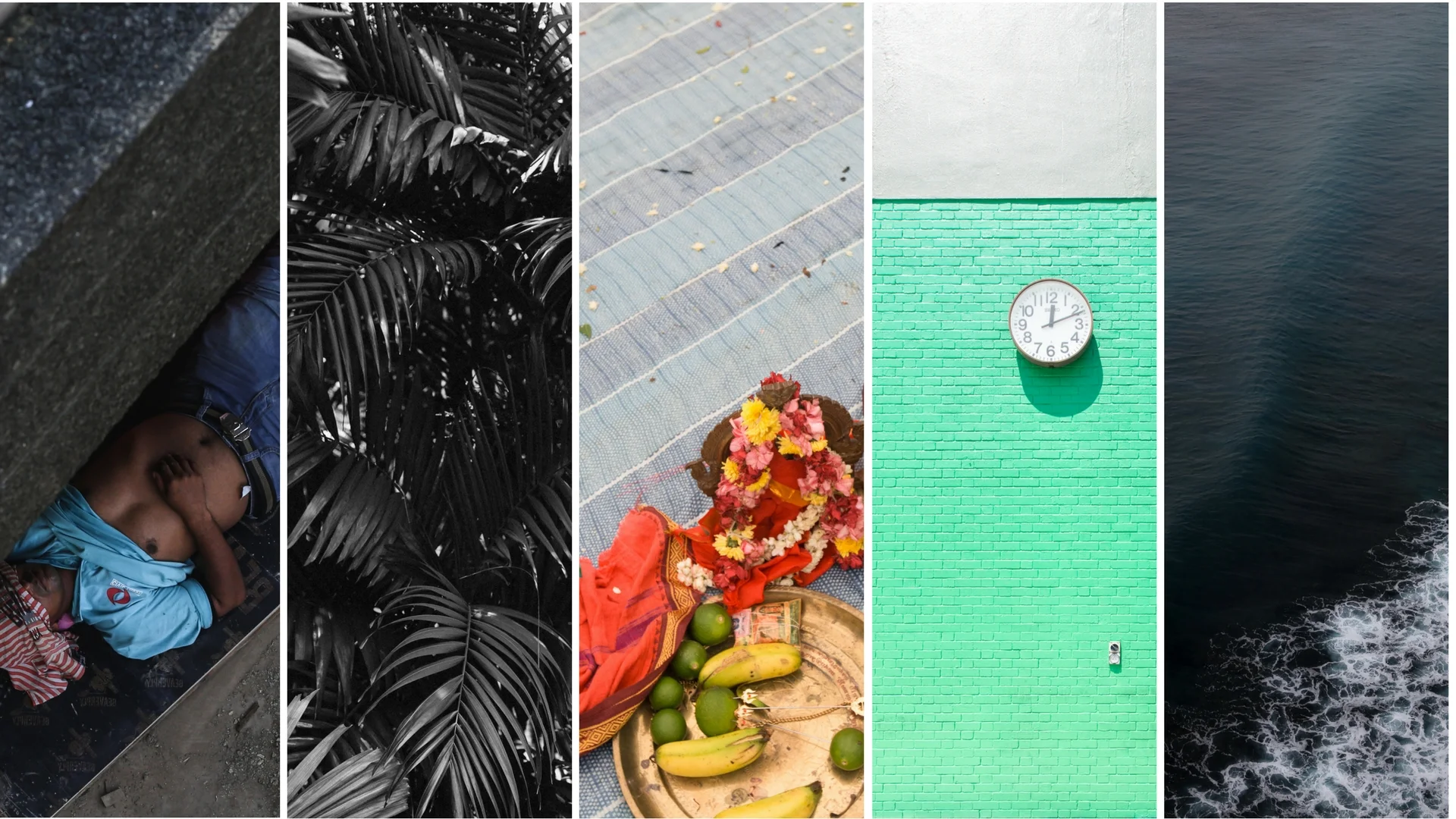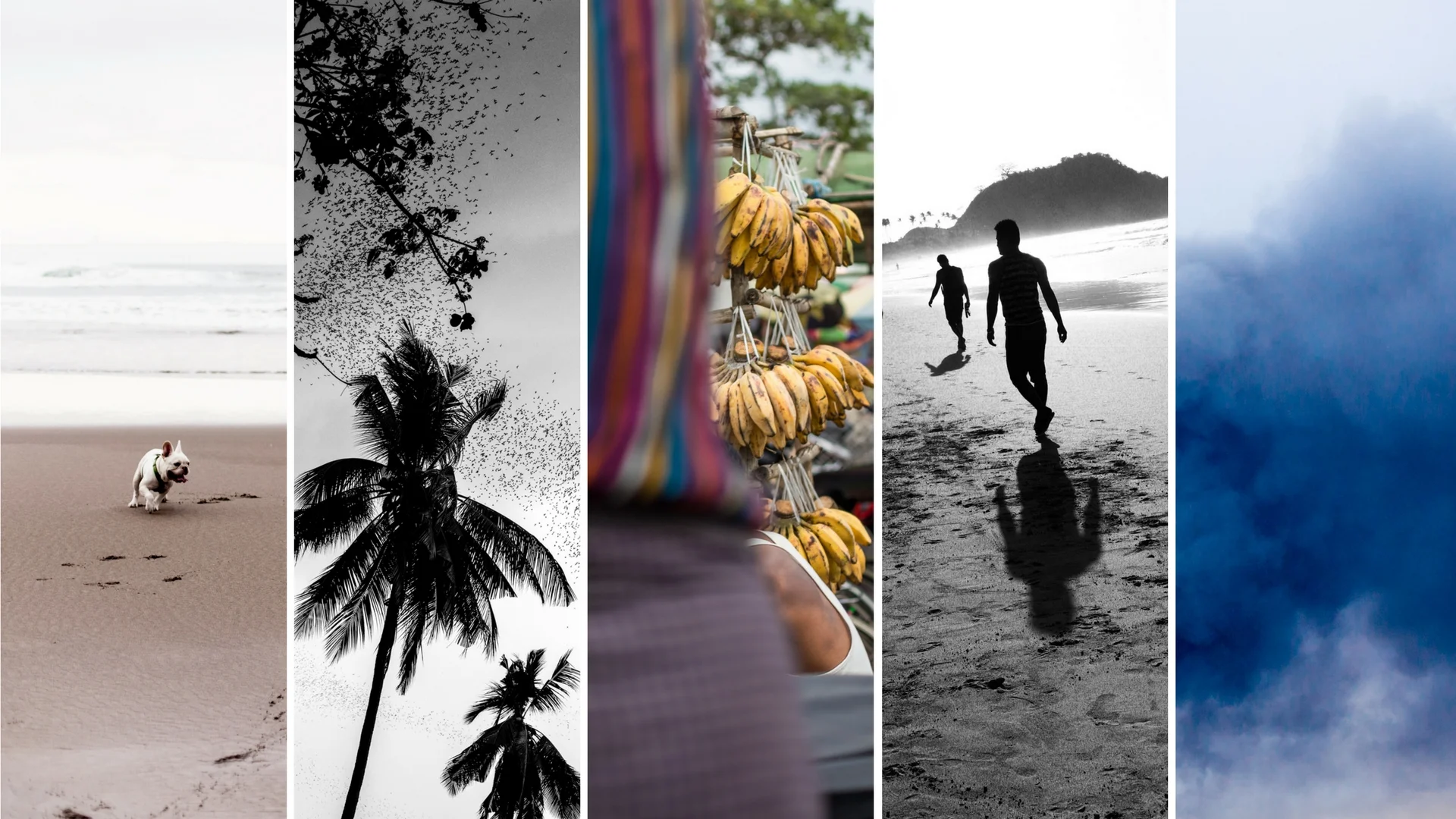VAPE CARVERS
FEATURE Nº18
IN BALI WE FIND A CONFLUENCE OF CULTURE WHERE TECHNOLOGY ART AND VAPE INTERSECT AS A NEW SUBCULTURE EMERGES
In a grungy workshop in Tampaksiring, Bali a master carver sits bare chested and cross-legged under the deathly stare of animal skulls.
His focus is fixed on what he holds in his hands. In his left, he wields a razor-sharp power tool. In his right, something new to these parts, a piece of wood composite onto which he carves a snarling Hindu mythological monster, known as a Raksasa, complete with the body of a snake and the head of a lioness.
He has carved the depiction many times. As a boy onto coconut husks, known as bomo, as a teenager etched into giant faces of ogoh ogoh statues used in the annual Balinese Nyepi celebrations, and later as a man onto the skulls of cattle where along with his friends he would form a renowned group of bone carvers from Tampaksiring sought after island-wide for their artisanal creations.
Today, however, he holds in his hand a creation new to Balinese shores.
He raises the object to his lips, takes a deep inhale and blows an enormous milky smoke cloud into the air, which fills the dark room with sweet-smelling vanilla.
The vape device, or mod, he holds in his hand is an US$800 intricate work of Balinese art, which he has spent the past two weeks toiling over.
His name is Wayan Tegal and he is one of the “Raksasa Carvers”, a group of artisans who have found a new niche amid a vape fascination currently gripping Indonesia’s youth culture.
Carver Wayan Tegal in the early hours near his home in Tampaksiring, Bali.
Times Of Change
Bali is changing fast as foreign and domestic forces collide all around the island. The edges of tradition, tourism and technology trickle into each other in a soup that’s not yet found it’s flavour. In the tourism beach areas thousand-year-old temples sit sandwiched between surf stores and burger joints, while new modern hotels rise above it all. It’s a time of rapid change and contrasts.
Bali’s famed carvers have also felt the touch of modernisation and in recent years the Tampaksiring carvers have fallen on hard times.
A number of factors have contributed: The domestic market demand for their intricate artisanal carvings has waned in the face of faster, modern carving techniques with an emergence of production-line carving methods, putting speed ahead of substance.
A Raksasa vape mod.
Intricate bone carving.
Intricately carved animal skulls at Wayan Tegal's workshop.
Today, the smartphone as a travel companion is also having real world effects on the Balinese carvers’ livelihoods, with many artists reporting a worrying trend: Tourists are reaching for their phones to take photos of their art rather than their wallets to pay for pieces.
“Our competition is with technology,” Wayan Tegal says. “With technology today, one speed, or one click on your phone is all that it takes. You can do anything with these devices, but when we use our feelings as tools when we make art, the result will always be better.”
Meanwhile, in the previously lucrative tourism sector the carvers have seen demand dissipate for more expensive, larger and intricate wood carving pieces and replaced by a trend where people want cheaper, smaller pieces in quantity vs quality. This has forced the carvers into a creative conundrum: quantity and money vs quality and artistic fulfillment.
“When technology make things, they are going to look exactly the same, but it's different when we make art. Art is more...it has life, it has soul,” Wayan Tegal says.
Much like Bali today, the carvers stand straddling the intersection of technology, tourism and their ancient traditions.
Therefore, in a bid to earn money, the carvers have moved in recent years to make products that abandon their artisanal carving methods, such as wood plug earrings, trinkets and smaller easy to produce knick-knacks.
Master carver Lumbung.
Wayan Tegal holds one of his kris knife creations.
Art And Soul
Tegal and the other Raksasa Carvers - six in total - believe when they create a piece of art out of creative compulsion opposed to money they imprint what they call “taksu”, or magic onto the piece.
“When we showcase our creations that are distinctively Balinese, and we do it with feelings, all these ideas that we have come to life in our art,” Tegal says.
Sit with the carvers long enough and they will regale you with tales of monsters and Hindu mythologies they envisage during meditative states before they begin carving on their quests to achieve taksu. As with all traditional carvers, they pray to the wood they use, observe rituals passed down to them and see their art, faith and soul intertwined.
A Balinese teenager blows vape rings at an ogoh ogoh burning.
Wayan Tegal watches one of his ogoh ogoh statues burn to ash as is tradition following the annual Nyepi celebrations.
Vape Culture
Additional reporting by Risyiana Muthia
Indonesia has one of the world’s highest smoking rates among men with 65 per cent of the population hooked.
Tobacco companies in Indonesia have major sway over the culture influence. Advertising is allowed and actively promoted specifically to the country’s male youth. Stop at any traffic light intersection and you will see a billboard with a Eurasian male model staring back at you with a babe or bike in the background and a pack of cigarettes superimposed with a stamp of approval over the entire scene.
Teenage boys in Bali and Indonesia grow up surrounded by cigarettes at home, in advertising and engrained in their culture.
Smoking here is a male-dominated addiction as only five per cent of women smoke, according to latest statistics.
In recent years, smoking cessation has entered the public conversation in Indonesia led by the vaping phenomenon that has developed into a US$8 billion industry worldwide.
With such a large slab of Indonesia’s male population smoking it’s no wonder vaping has caught on in a huge way. Bali is no exception and around the island hundreds of vape cafes have been established.
Walk into one and you will most likely walk through sweet-smelling cloud and find the young owners sitting in a haze of smoke surrounded by hundreds of bottles of vape liquid - ranging from nicotine-infused, coffee, mango to even flavours such as pancake, fruit loops and bubblegum.
Vaping faces backlash as more researchers investigate the long-term health effects worldwide.
However, there are thousands of cases of people who have quit by using vape devices with and without nicotine-infused liquid inside.
There’s a general consensus at present that vaping is a harm reduction device to replace smoking, not as something advisable to start if you have never smoked.
Vaping has been proven to be healthier than smoking and that is making tobacco companies nervous as they rush to try and control, and in many cases stamp out, vaping.
Today, a slew of regulations worldwide are coming into effect while tobacco companies try to invent their own e-cigarette devices to win back millions in lost revenue.
In Indonesia a recent article by the Jakarta Post reports “a 57 per cent tax on non-tobacco alternatives starting this summer”.
And late in 2017 Indonesia’s Commerce Minister announced that all vape shops would need to comply with regulations from the Ministry Of Health and National Food & Drug Agency as well as hold certificates from the country’s National Standards Agency. It seems vaping could be about to get steamrolled with paperwork, but not without a fight.
Today in Bali vape culture is booming. New cafes continue to open all over the island. There is even an “Asosiasi Vaporiser Bali”, or Bali Vape Association (AVB), established in 2015 and with 100 small business owners, mod and liquid manufacturers who actively campaign to keep vaping free from scrutiny.
Founder of AVB Ida Bagus Manobhawa is positive about the future of vape in Indonesia.
“We organise a lot of social events and try to work together with the government to counter any misleading information about vape...Their response has been very positive towards the vape community and small businesses in Bali. So far, there hasn't been any ban when it comes to vape distribution and production. Vape is legal.”
Ida says AVB’S main concern is with the media and lack of balanced reporting on the subject of vape.
“We think the negative reporting around vape is biased, and many use old and questionable sources. They don't want to use new research that shows how vape is safe for use.”
As vape grows in popularity in Bali, competitions and meet ups are being staged, hundreds of Instagram accounts have been created and independent cafes and social media buzz with the chatter young Balinese men comparing vape mods, liquids and paraphernalia.
A new subculture, industry and micro-economy has been born, where the Raksasa vape carvers have found a means to make money and fuse their passion for their culture.
Cattle skulls prepared and stored for carving.
A Raksasa mod in the making.
Young apprentice carver in Tampaksiring watches Wayan Tegal work.
Where A New Subculture Is Born
Stare at one of the Raksasa vape mods long enough and the level of detail is hard to comprehend. The artistry comes at a hefty price tag of US$800, but are aimed at the high-end vape collectors and sold locally and internationally.
All of the Raksasa carvers say they have given up cigarettes since being introduced to vape and are hopeful they have found a line of products that can reignite consumer passion for their work by appealing to a new, younger audience.
“With the ideas we have now people are more excited with the vape mods. Before Raksasa Mods was born, the plain ones available in Bali were not not pieces of art and were not interesting.”
“We put our culture inside these vape mods. They are alive with taksu."
To understand the carvers’ passion you have to sit with them for a day observe.
Tegal sits for hours under a canopy of vanilla smoke on the floor surrounded by his workers with a look of serene concentration of his face. Smoke pours out through the cracks in the grimy cement walls and the sound of electric saws, drills and needles on wood fill the air. Occasionally his son and gaggle of friends run through the workshop and watching over the whole scene are rows of hanging skulls - bulls, cows and goats - that each have intricate Balinese patterns and mythological characters engraved into their skeletons.
They are relics of the bone carvers past and how they came to fame in these parts. Previously, these skulls were the canvas and commodity of the time.
Watching Tegal work a realisation comes to mind that for the carvers the nature of their canvas is not important - bone, wood, statues, paper or composite - but instead following their calling to the craft for the sake of creativity. Nothing more, nothing less.
For now, they are vape carvers.
“In Bali to survive with art we have to do it with feelings and with heart. We can do more than what machines can do and this is our competition and our battle now. Not everything can be valued with money or wealth. It’s how we can be valued through conserving arts and culture that we have in Bali that is important to us.”














